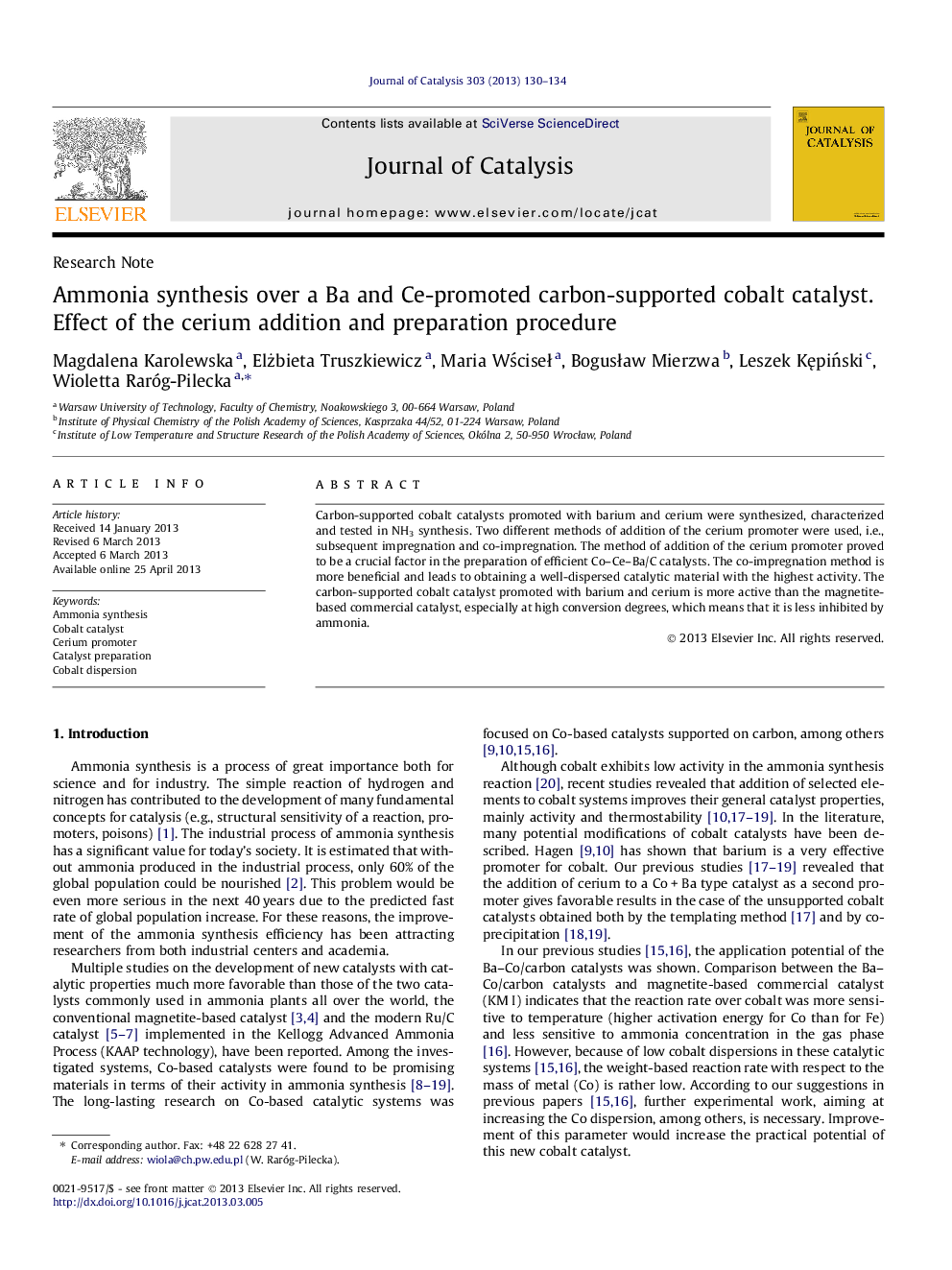| Article ID | Journal | Published Year | Pages | File Type |
|---|---|---|---|---|
| 61264 | Journal of Catalysis | 2013 | 5 Pages |
•Two different methods of cerium addition were used.•The cerium addition method affects the Co dispersion and the activity of the catalysts.•The co-impregnation method is more beneficial than the subsequent impregnation.•The (Co–Ce)T–Ba/C catalyst exhibited the highest dispersion and the highest activity.•The (Co–Ce)T–Ba/C is more active than the commercial KM I catalyst.
Carbon-supported cobalt catalysts promoted with barium and cerium were synthesized, characterized and tested in NH3 synthesis. Two different methods of addition of the cerium promoter were used, i.e., subsequent impregnation and co-impregnation. The method of addition of the cerium promoter proved to be a crucial factor in the preparation of efficient Co–Ce–Ba/C catalysts. The co-impregnation method is more beneficial and leads to obtaining a well-dispersed catalytic material with the highest activity. The carbon-supported cobalt catalyst promoted with barium and cerium is more active than the magnetite-based commercial catalyst, especially at high conversion degrees, which means that it is less inhibited by ammonia.
Graphical abstractThe addition of cerium enhanced the activity of Co–Ba/C catalyst provided that an appropriate preparation procedure is applied. The Co–Ce–BaC catalysts are more active than the magnetite-based commercial catalyst, especially at high conversion degrees (11% NH3, 9.0 MPa, 400 °C).Figure optionsDownload full-size imageDownload high-quality image (61 K)Download as PowerPoint slide
